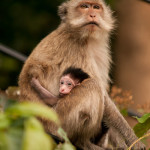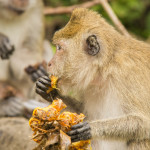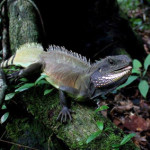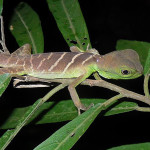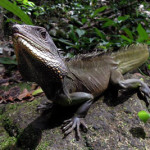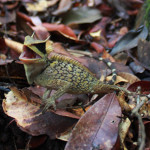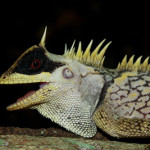Orange Headed Thrush (Geokichla citrina)
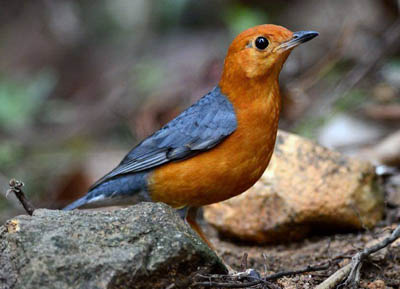
Image Copyright สุธนัย ครุพานิช
Last Observed: December 2015 – Koh Chang
Last Observed By: สุธนัย ครุพานิช
The Orange-headed thrush should probably be called the orange-head-and-bodied thrush with bluish-grey wings if accuracy was an issue. It is a common woodland resident across India and Southeast Asia.
It is a ground feeder and feeds on insects, spiders and the like.
Orange-headed thrush Wikipedia
Crab-Eating Macaque (Macaca fascicularis)
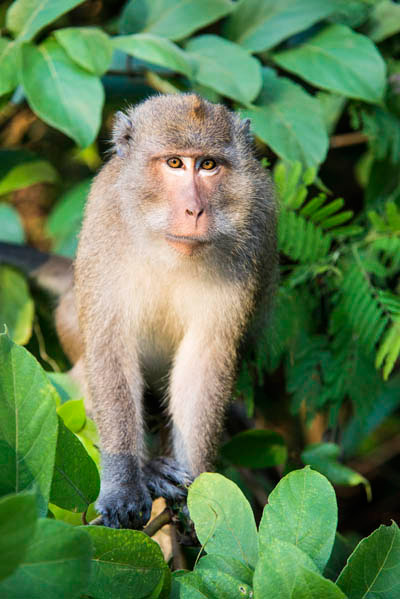 Observed: Koh Chang, December 2015
Observed: Koh Chang, December 2015
Observed By: Jonathan Milnes, David Vinot, Everyone!
You can’t miss Koh Chang’s macaque monkeys, they seem to be everywhere. But this didn’t used to be the case. There are two possible reasons for this. Firstly they might have been hunted for food back in the days before National Park protection. Secondly these monkeys are a species that is an opportunitsic hunter and scavenger that adapts very well to living off the waste that comes with human development. So whilst it is a species that is native to Koh Chang’s environment numbers have grown rapidly around the tourist centres of Koh Chang as the source of food around here is abundant.
This species of Macaque, also known as the Long-tailed Mazaque for obvious reasons, is plentiful and not at all threatened precisely because of this affinity with human environments. In fact they can be something of a pest and you most definitely shouldn’t feed them. Here’s why;
– Crab-eating Macaques are quite at home on Koh Chang and have no problem acquiring their own food
– Monkeys are wild animals, not pets
– They bite
– They can also carry rabies and other deadly diseases
– They are often run over by cars
– The Jungle Book was a Disney cartoon not a documentary
So be very careful around these Monkeys, enjoy watching them but keep your distance. Imagine there was a wild tiger standing next to you, or an angry King Cobra, or a pack of rats. Or all three.
Crab-Eating Macaque Elephant Wikipedia
Image Copyright Jonathan Milnes
Image Copyright Jonathan Milnes
Image Copyright Floris Hermans
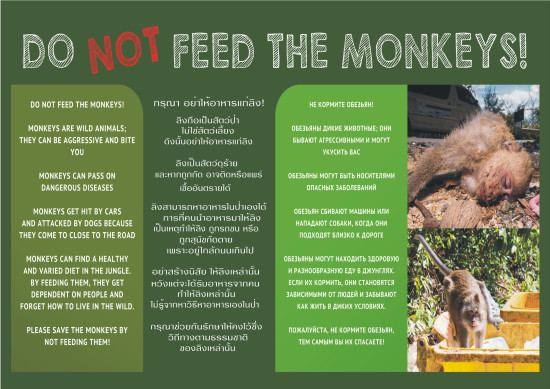
Common Mock Viper (Psammodynastes pulverulentus)
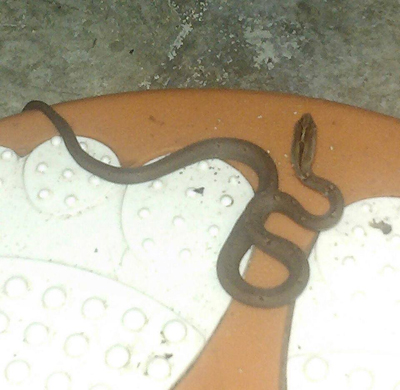
Image Copyright Napha Kotkangplu
Last Observed: December 2015
Observed By: Napha Kotkangplu
The Common Mock Viper is a small species of snake that grows up to 65 cm in length. It is native to Asia.
Perhaps the most startling fact about this species is that the male posesses three penises. Really. You’d think that this would be a problem for a snake but the specially evolved hemipenis can be retracted when not in use. Only one of the three hemipenes is used at a time and they commonly have barbs or hooks. It is truly a strange and amazing world.
As its name suggests the mock viper resembles a viper but does not come from the same family. It is rear fanged and possesses a very mild venom that isn’t harmful to humans.
Common Mock Viper Wikipedia
Mock Viper Thailandsnakes.com
Asian Water Dragon (Physignathus cocincinus)
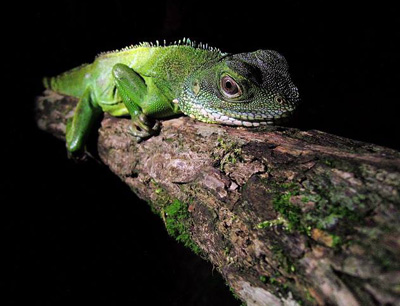
Image Copyright สุธนัย ครุพานิช
Last Observed: December 2015
Observed By: สุธนัย ครุพานิช, Parinya Pawangkhanant
What a brilliant picture this is of the splendid Asian water dragon. This mighty lizard can grow up to 1 metre in length and live for up to fifteen years.
These lizards are most commonly found along the banks of freshwater streams and are mainly tree-dwelling (arboreal) living and active mainly in the daytime (diurnal).
Asian Water Dragon Wikipedia
Image Copyright Parinya Pawangkhanant
Image Copyright สุธนัย ครุพานิช
Image Copyright สุธนัย ครุพานิช
Kukri Snake (G. Oligodon)
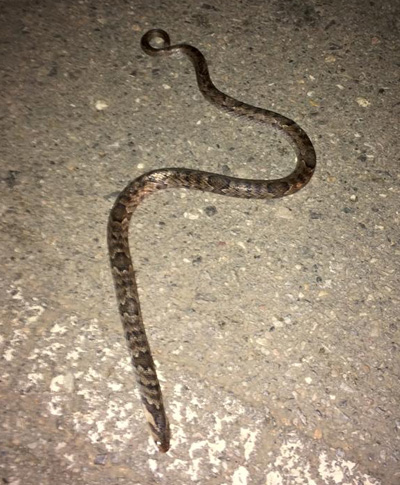
Image Copyright Hans-Henrik Hansen
Last Observed: December 2015
Observed By: Hans Henrik Hansen
Kukri Snakes or Oligodon are a genus of snakes that comprise 75 species. And this is one of them. They live mainly by stealing the eggs of birds and reptiles and typically are less than 1.5 metres in length.
They are not venomous or considered dangerous to hymans. They have large teeth at the back of their throats that are specially adapted to slicing open aggs as they are being swallowed and thereby speeding up digestion.
Oligodon Wikipedia
Cardamom Forest Gecko (Cyrtodactylus intermedius)
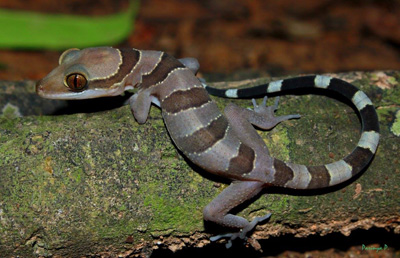
Image Copyright Parinya Pawangkhanant
Last Observed: December 2015, Koh Chang
Observed By: Parinya Pawangkhanant
The Cardamom Forest Gecko, or intermediate bow-fingered gecko, is a species of Gecko found only in parts of Thailand, Cambodia and Vietnam. It is a forest-dwelling Gecko that is quite at home in Koh Chang’s lush rainforest.
Cardamon forest Gecko Leaf Turtle Wikipedia
Western Black-Bridged Leaf Turtle (Cyclemis atripons)
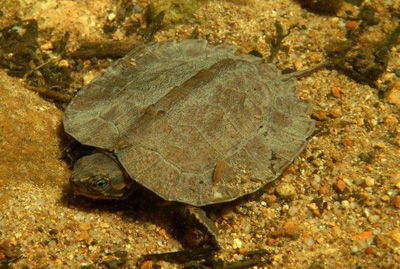
Image Copyright Parinya Pawangkhanant
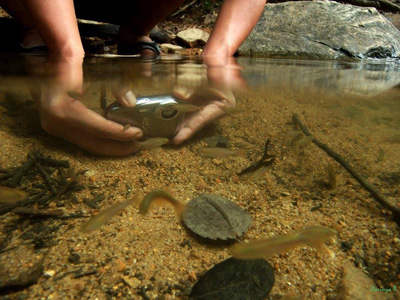
Image Copyright Parinya Pawangkhanant
Last Observed: December 2015, Koh Chang
Observed By: Parinya Pawangkhanant
The name of this tiny freshwater turtle is probably longer than the animal itself. The species is native to Cambodia, Southeast Thailand and Vietnam.
It is apparently nearly indistinguishable from the Eastern Black-Bridged Leaf Turtle.
Western Black-Bridged Leaf Turtle Wikipedia
Checkered Keelback (Xenochrophis piscator)
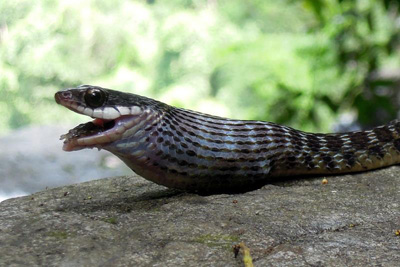
Image Copyright Parinya Pawangkhanant
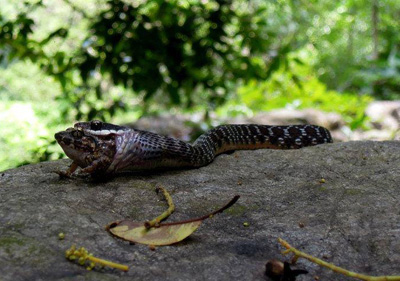
Image Copyright Parinya Pawangkhanant
Last Observed: December 2015, Koh Chang
Observed By: Parinya Pawangkhanant
This checkered keelback is giving an excellent demonstration of how snakes can dislocate their jaws to swallow very large meals – a handy skill.
This species is a large nonvenomous snake that is also known as the Asiatic Water Snake.
Checkered Keelback Wikipedia
Acanthosaura Cardomomensis
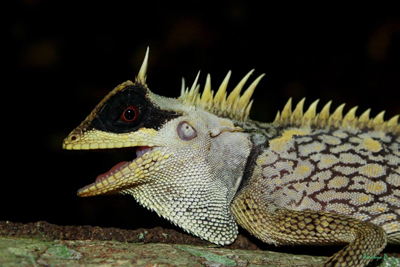
Image Copyright Parinya Pawangkhanant
Last Observed: December 2015, Koh Chang
Observed By: Parinya Pawangkhanant
This fierce looking lizard sports a black mask-like marking around its eyes as well as a crest of yellow spines down its neck and back and intricately patterned scale markings.
It is apparently a very local species to Koh Chang being found only in Eastern Thailand and the Cardamom Mountains of Western Cambodia (hence the name Cardomomensis). It is also a relatively newly discovered species and we’re certainly lucky to have it as a fellow Koh Chang resident.
Acanthosaura Cardomomensis Wikipedia
Image Copyright Parinya Pawangkhanant


 Observed: Koh Chang, December 2015
Observed: Koh Chang, December 2015